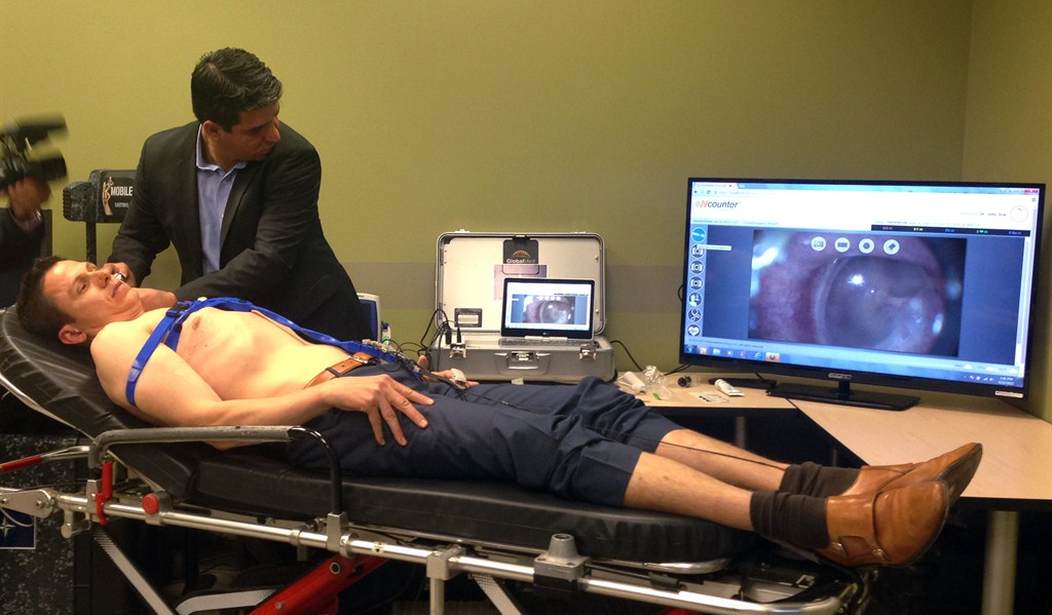One of the few silver linings of the COVID-19 pandemic is that it caused Americans to re-evaluate our health care systems and processes. One of the most important aspects of quality health care is accessibility. Due to the pandemic, telehealth, which offers increased access to quality care, has become more popular than ever.
Telehealth expansion has two major benefits: improving access to care for patients and increasing revenue for health care facilities. By removing regulatory barriers, governments at both the state and federal levels can expand telehealth services, making health care more widely available. Telemedicine also has the potential to revolutionize the delivery of health care services and substantially drive down costs.
During the height of the COVID-19 pandemic, millions of patients decided to forgo in-person care out of fear of the pandemic. The Centers for Disease Control and Prevention (CDC) reported more than 40 percent of patients delayed or avoided medical procedures and appointments last year.
Additionally, late last year, a Centers for Medicare and Medicaid Services (CMS) ruling delivered on President Donald Trump’s executive order on Improving Rural and Telehealth Access, which added more than 60 services to the Medicare telehealth list. This decision made it possible for Medicare patients to get access to expanded services when they most desperately needed it.
“During the COVID-19 pandemic, actions by the Trump administration have unleashed an explosion in telehealth innovation, and we’re now moving to make many of these changes permanent,” said then-Health and Human Services Secretary Alex Azar.
“Telehealth has long been a priority for the Trump administration, which is why we started paying for short virtual visits in rural areas long before the pandemic struck,” said then-CMS Administrator Seema Verma. “But the pandemic accentuated just how transformative it could be, and several months in, it’s clear that the healthcare system has adapted seamlessly to a historic telehealth expansion that inaugurates a new era in healthcare delivery.
Telehealth is growing more popular among patients. A study conducted by West Monroe Partners found that among telehealth patients receiving services on a mobile app, 80 percent preferred telehealth services compared to a traditional in-office visit.
What’s more, a 2017 report on the global telemedicine market estimated the telehealth market is positioned to expand at a compound annual growth rate of 16.3 percent over the next decade, reaching approximately $78.3 billion by 2024, according to Accuray Research LLP.
Following this decision, and the successes of telehealth expansion, the U.S. Senate recently introduced the Protecting Rural Telehealth Access Act on June 16. The bipartisan bill aims to permanently codify into law the temporary regulatory rollbacks impacting telehealth that were initiated during the COVID-19 pandemic. Approximately 20 percent of Americans live in rural areas, and the United States has seen 136 rural hospital closures since 2010, with 20 closures in 2020, a new record.
The need for rural health care access has been exacerbated by the COVID-19 pandemic. Specifically, this legislation would permanently remove restrictions on technologies for telehealth, allowing rural health clinics and Federally Qualified Health Centers to serve as distance sites for telehealth providers. It would also permanently waive geographic restrictions for Medicare patients to be treated from their homes. The bill would also allow payment parity for audio-only health services for clinically appropriate appointments, meaning patients who don’t have broadband access would still be able to receive treatment over the phone.
Sen. Joni Ernst (R-IA), a co-sponsor of the bill, had this to say, “Even before the pandemic, access to telehealth was critical to helping Iowans in rural areas get the care they need. That’s why I prioritized working with Democrats and Republicans to expand access to these services during this difficult year. Now that we’ve seen its success, there’s no reason we shouldn’t make these changes permanent to continue supporting both our rural patients and hospitals.”
The Protecting Rural Telehealth Access Act is a big step in the right direction. There is no doubt that removing barriers to accessing care is commonsense policy. If passed, this bill would be especially beneficial to rural communities by allowing rural facilities to build out their telemedicine infrastructure, knowing the regulations are suspended indefinitely.
Telehealth expansion applies a free-market approach to health care. Similarly, states can and should act independently of Congress to roll back regulations and unleash the telehealth marketplace. Telehealth services fill a vital need in our communities by increasing access to care and lowering costs.
Christina Herrin ([email protected]) is government relations manager at The Heartland Institute, a nonpartisan, free-market think-tank headquartered in Arlington Heights, Illinois.














Join the conversation as a VIP Member